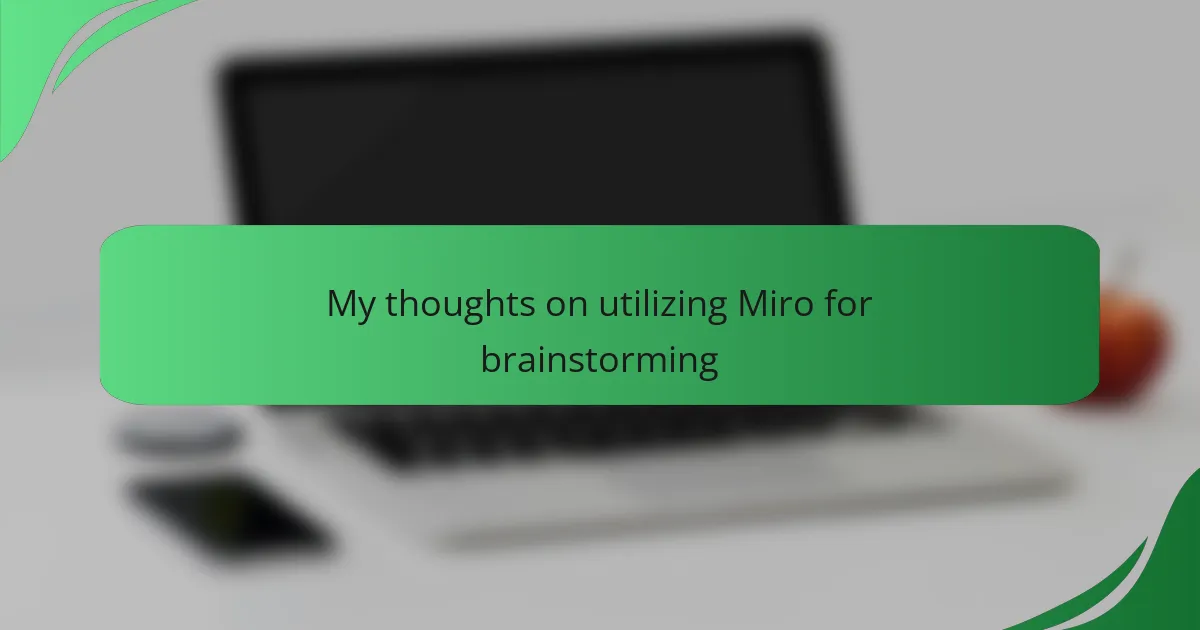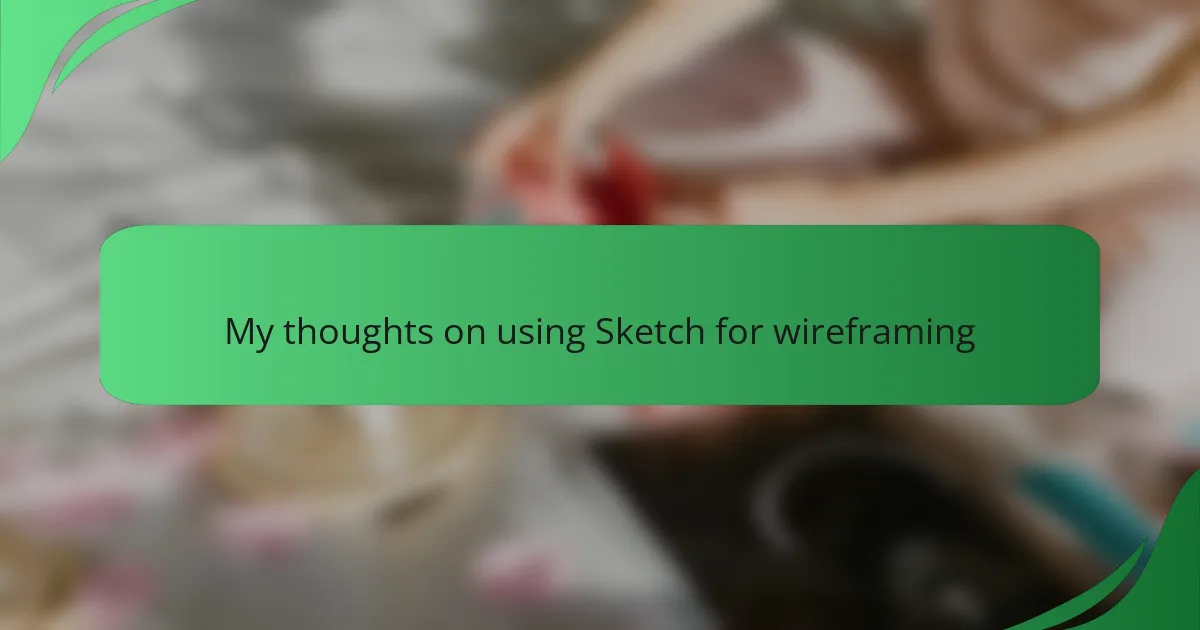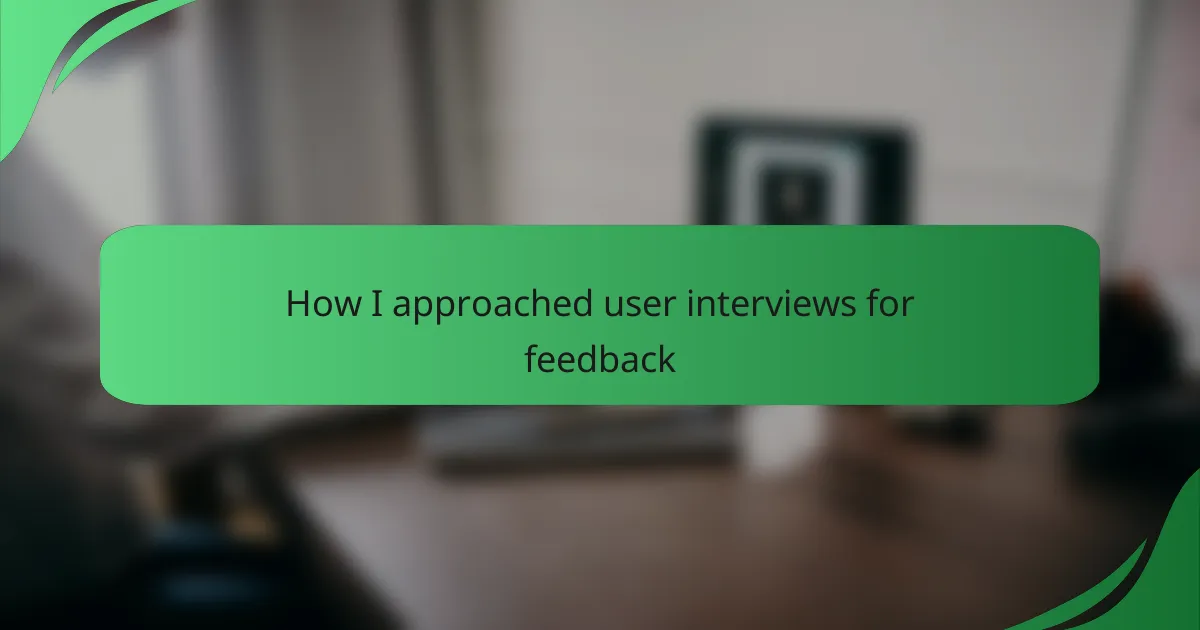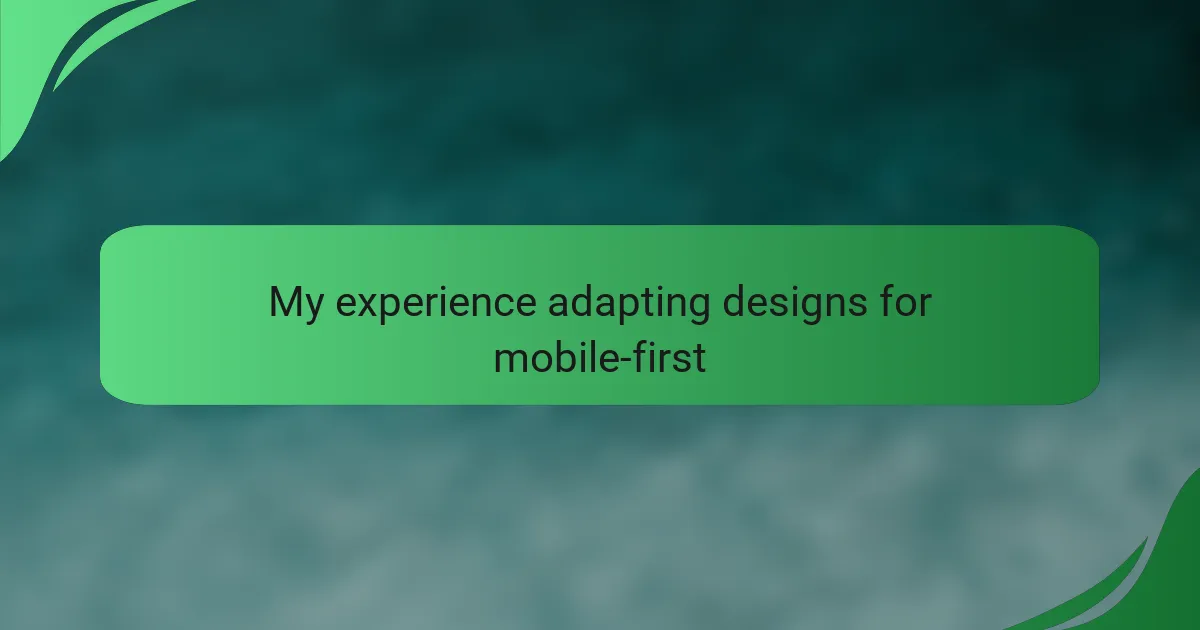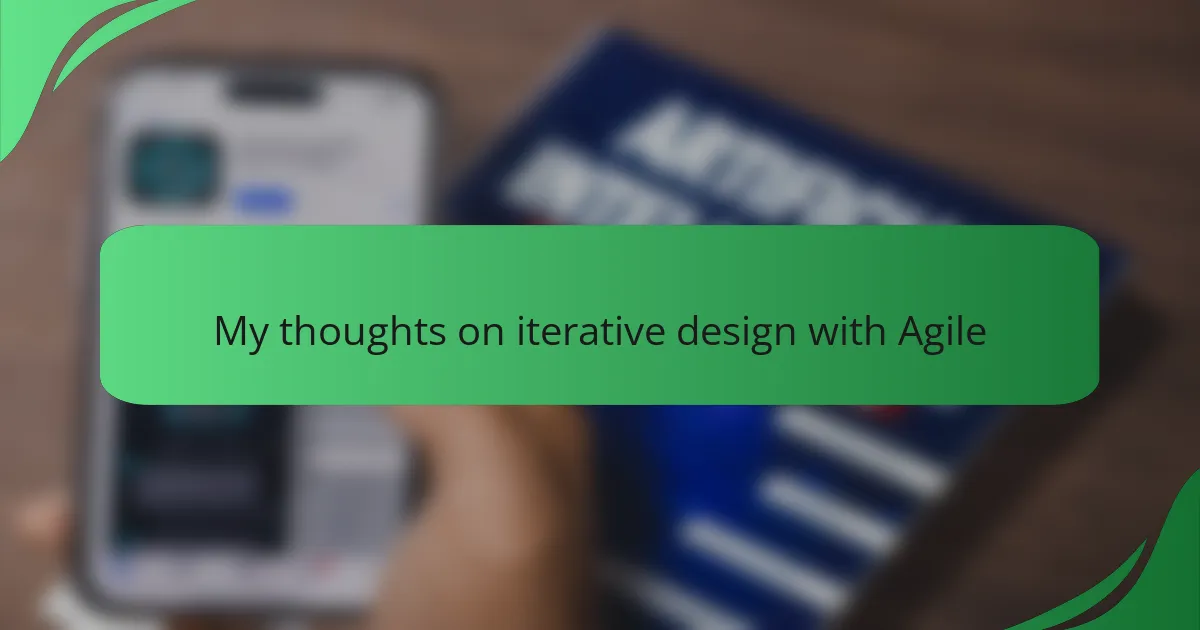Key takeaways
- Effective interface interaction design combines usability and aesthetics, prioritizing user behavior and feedback for better engagement.
- Brainstorming fosters creativity and team collaboration, leading to innovative solutions and enhanced project outcomes.
- Miro’s features, such as an infinite canvas and real-time collaboration tools, transform brainstorming sessions into dynamic and engaging experiences.
- Setting clear objectives and using templates in Miro can streamline brainstorming processes and enhance team participation.
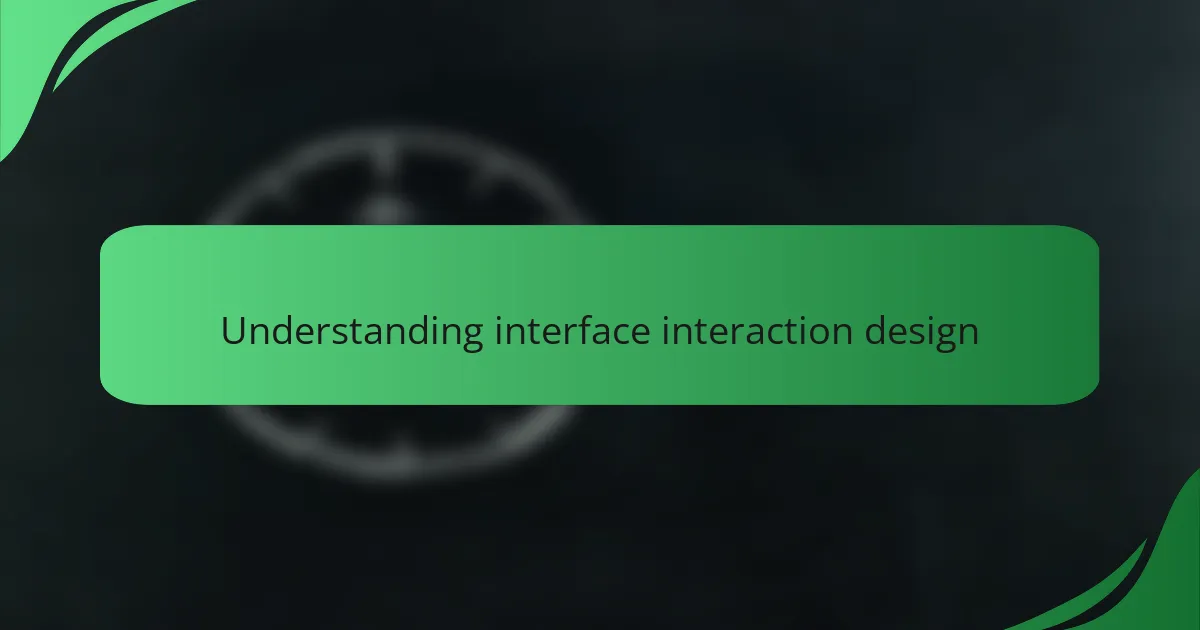
Understanding interface interaction design
Understanding interface interaction design is all about creating intuitive experiences that resonate with users. From my experience, effective interaction design merges usability with aesthetics, ensuring that every visual element serves a purpose. I’ve found that when designers prioritize user behavior and feedback, it leads to more engaging and user-friendly products.
In the realm of interface design, I often reflect on how critical it is to consider the user’s journey. It’s not just about the layout; it’s about how each component feels to the user. I’ve seen firsthand how thoughtful design can evoke emotions and enhance user satisfaction, making the interface not just functional but also enjoyable.
Here’s a comparison table that highlights some fundamental aspects of interface interaction design:
| Aspect | Description |
|---|---|
| Usability | Ensures ease of use and straightforward navigation. |
| Aesthetics | Involves the visual appeal that attracts and retains users. |
| Feedback | Provides users with responses to their actions, enhancing interaction. |
| Accessibility | Makes designs usable for people of all abilities and disabilities. |
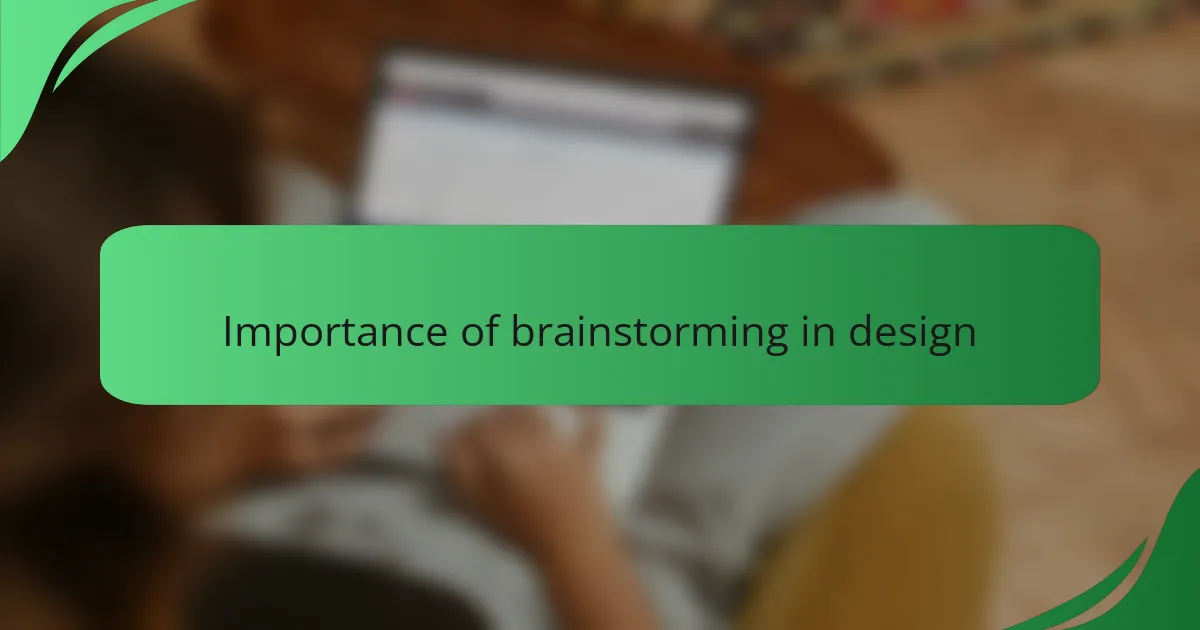
Importance of brainstorming in design
Brainstorming is an essential part of the design process because it fuels creativity and innovation. In my experience, engaging with team members during brainstorming sessions often leads to unexpected ideas that transform projects. Have you ever been in a discussion where an offhand remark sparks a brilliant solution? I cherish those moments because they often pave the way for breakthrough designs.
The collaborative nature of brainstorming not only cultivates diverse perspectives but also builds team camaraderie. Each participant brings unique insights, allowing the group to explore various angles and possibilities. I remember a project where a simple collective brainstorming session led us to refine our interface significantly, resulting in a product that really resonated with our audience.
Without brainstorming, the design process can become stagnant, limiting potential. I’ve seen how initial ideas can evolve dramatically when given the space to be challenged and expanded upon. It’s through this iterative dialogue that effective solutions emerge, ultimately leading to designs that are both innovative and user-centric. The energy of a brainstorming session can be contagious, infusing the project with renewed purpose and enthusiasm.
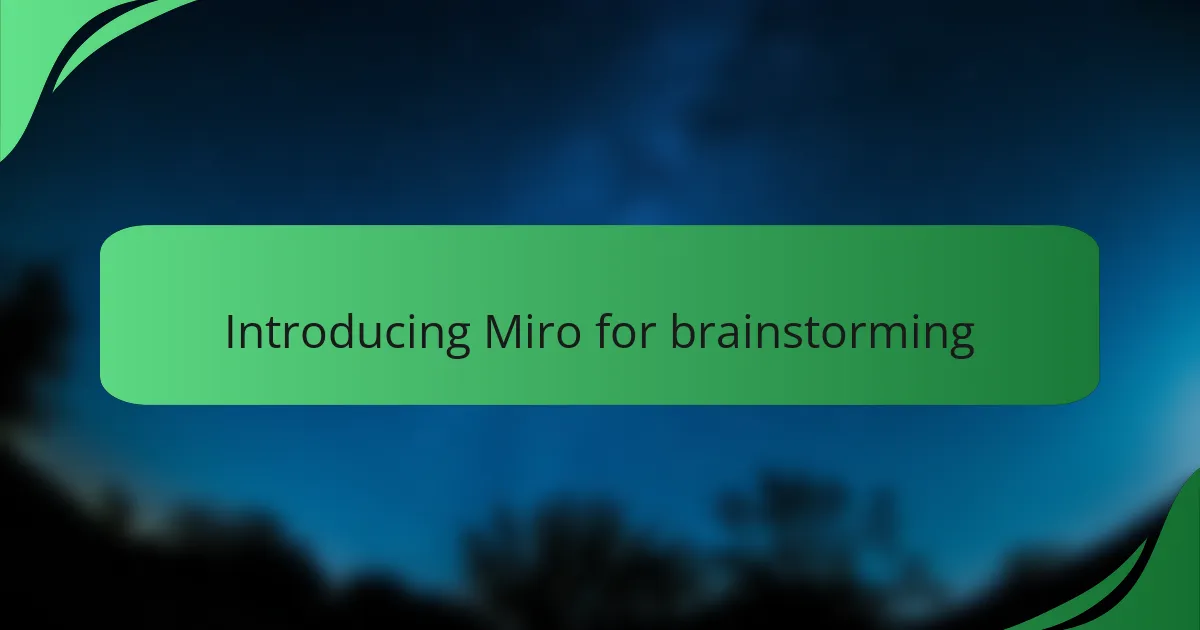
Introducing Miro for brainstorming
Miro is an incredibly versatile platform that I’ve found to be invaluable for brainstorming. Its infinite canvas allows you to let your ideas flow freely, which I love. I’ve experienced that the ability to incorporate sticky notes, images, and drawings transforms the often rigid brainstorming process into a dynamic and creative session.
In my last project, we used Miro for a brainstorming workshop, and it was quite the game-changer. Participants fed off each other’s ideas, and the visual aspect kept everyone engaged. I noticed how the energy in the room increased as we collaborated in real time, making the brainstorming process not just productive, but enjoyable.
Here’s a comparison table highlighting key features of Miro for brainstorming:
| Feature | Description |
|---|---|
| Infinite Canvas | Allows unlimited space for brainstorming ideas. |
| Collaborative Tools | Real-time collaboration with team members enhances participation. |
| Templates | A variety of templates streamline the brainstorming process. |
| Integrations | Seamless integration with tools like Slack, Google Drive, and more. |
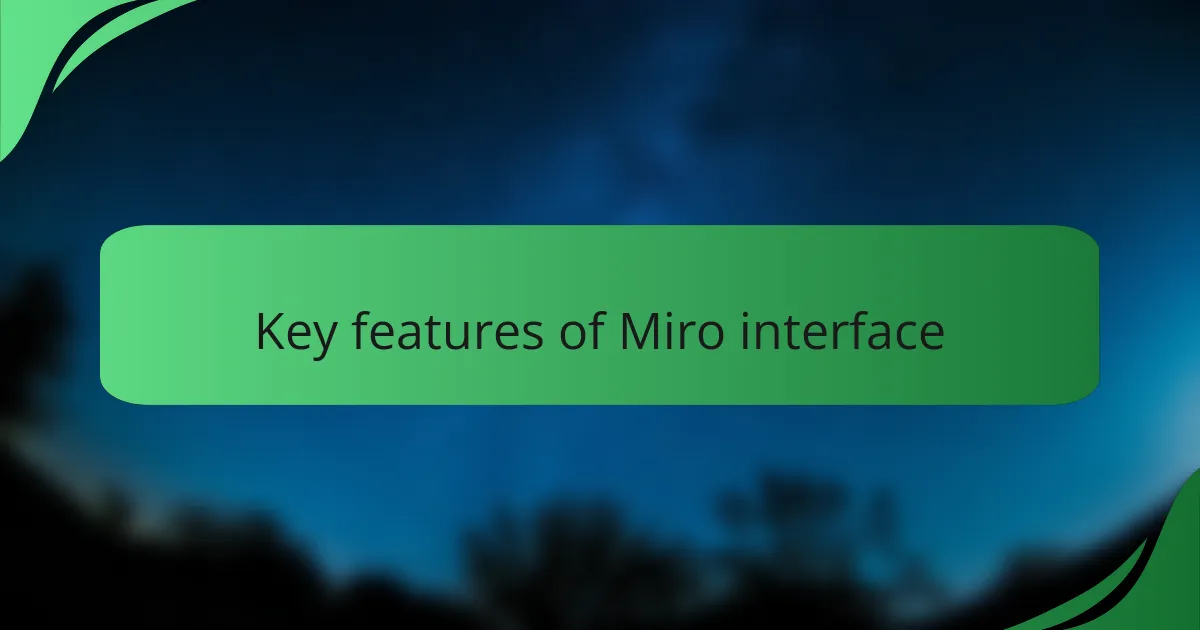
Key features of Miro interface
The Miro interface boasts some impressive features that truly enhance the brainstorming experience. One standout aspect is its infinite canvas. I can’t tell you how liberating it feels to have limitless space for your ideas to unfold. Remember that time when you felt constrained by the boundaries of a typical whiteboard? With Miro, you can drag and drop as much as you like, creating a sprawling visual landscape of thoughts and concepts.
Another key feature that I find particularly valuable is the collaborative tools. The real-time interaction that Miro facilitates can really spark creativity. I still recall a session where ideas blended seamlessly, with contributions from every team member building upon each other. Have you ever witnessed that kind of synergy? It’s exhilarating, and it transforms the brainstorming process into a vibrant dialogue rather than a series of isolated comments.
Additionally, Miro offers a plethora of templates that cater to various brainstorming needs. I’ve discovered these templates can save precious time and help keep discussions focused. When you’re in the thick of a brainstorming session, having a structured approach can guide the conversation effectively. It’s like having a roadmap to navigate the creative chaos, ensuring you cover all angles while staying engaged.
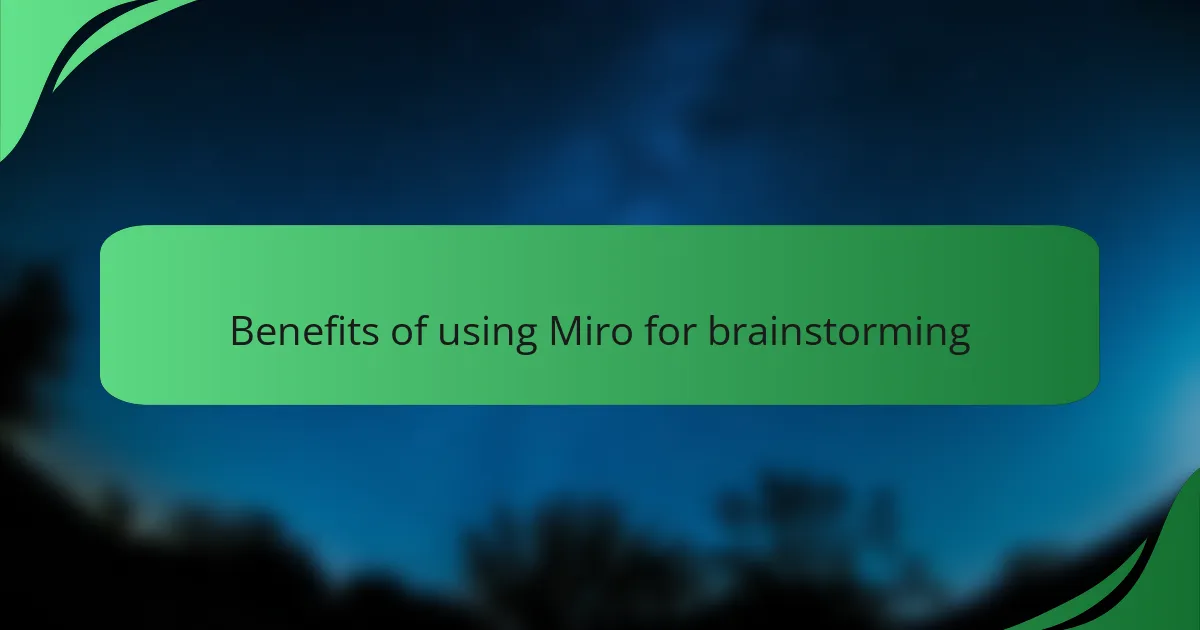
Benefits of using Miro for brainstorming
Using Miro for brainstorming offers an array of benefits that can transform the way teams collaborate. Personally, I’ve found that the real-time collaboration feature makes remote brainstorming sessions feel more interactive and engaging. It’s empowering to see ideas flow instantly, and that visual aspect captures everyone’s input in a dynamic way.
Additionally, Miro’s templates can help structure thoughts efficiently. I often rely on these pre-made frameworks to kickstart creativity, especially when the team is facing a mental block. The endless possibilities for visual mapping and organization make it easier to connect dots and build on each other’s ideas.
The integration capabilities with other tools further streamline the process. In my experience, combining Miro with applications like Slack or Google Drive simplifies the workflow, allowing teams to share their insights without jumping between platforms. Here’s a quick comparison of Miro with traditional brainstorming methods:
| Aspect | Miro | Traditional Brainstorming |
|---|---|---|
| Collaboration | Real-time, remote inclusion | Limited by location |
| Visual Tools | Dynamic templates & boards | Paper and pen limitations |
| Integration | Seamless with apps | Often manual methods |
| Idea Retention | Digital storage & accessibility | Physical notes may get lost |
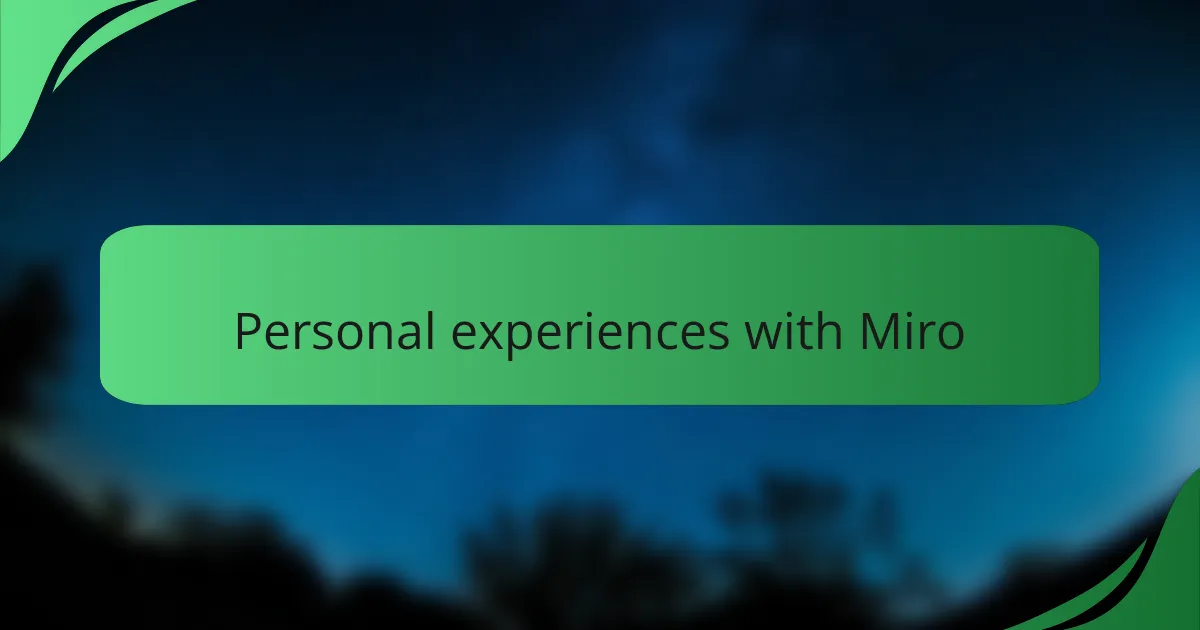
Personal experiences with Miro
My experience with Miro has been quite transformative during brainstorming sessions. Initially, I was drawn to its vibrant interface and ease of use, which made collaboration feel less daunting. I remember a time when my team and I were stuck in a rut over a project; Miro’s sticky notes and mind map features truly sparked creativity among us, breaking down our barriers and allowing ideas to flow freely.
One thing I’ve noticed is how Miro brings a sense of energy to the room, even during virtual meetings. The ability to see everyone’s contributions in real-time creates a shared sense of ownership and motivation. Here are some highlights from my personal experience using Miro for brainstorming:
- Visual Engagement: I love how the visuals make ideas more impactful, helping to clarify complex concepts.
- Collaborative Spirit: It fosters an environment where every voice is heard, which I found essential for team dynamics.
- Flexibility: The ability to rearrange elements on the board easily allows for a dynamic creative process.
- Integration: Miro seamlessly connects with other tools, which streamlined our workflow without any hiccups.
- Feedback Loop: Seeing immediate reactions from team members often prompted further discussion and refinement of ideas.
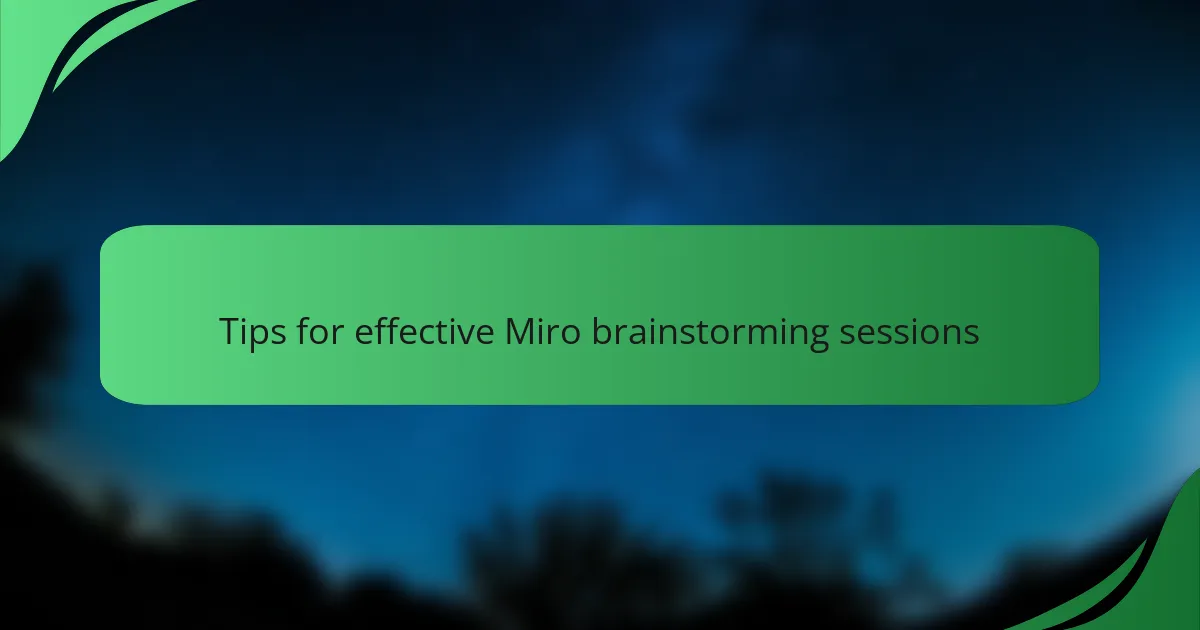
Tips for effective Miro brainstorming sessions
When diving into Miro for brainstorming, I’ve found that setting a clear agenda beforehand can make a world of difference. It allows everyone to focus on a specific problem or idea, enhancing the creative flow. I’ve often noticed that when I share my own insights and encourage team members to build on them, we create an environment bursting with innovation.
To make your Miro brainstorming sessions even more effective, consider these tips:
- Define a clear objective for each session.
- Use templates to guide discussions and keep everyone on track.
- Encourage participation by inviting feedback and building on others’ ideas.
- Leverage Miro’s sticky notes for quick thoughts – they can spark deeper discussions.
- Set a time limit for each brainstorming phase to maintain momentum and urgency.
- Follow up with a voting session to prioritize ideas, ensuring the best ones get highlighted.
In my experiences, these strategies have not only improved participation but also fostered a sense of ownership among team members, making the final outcomes much stronger.
